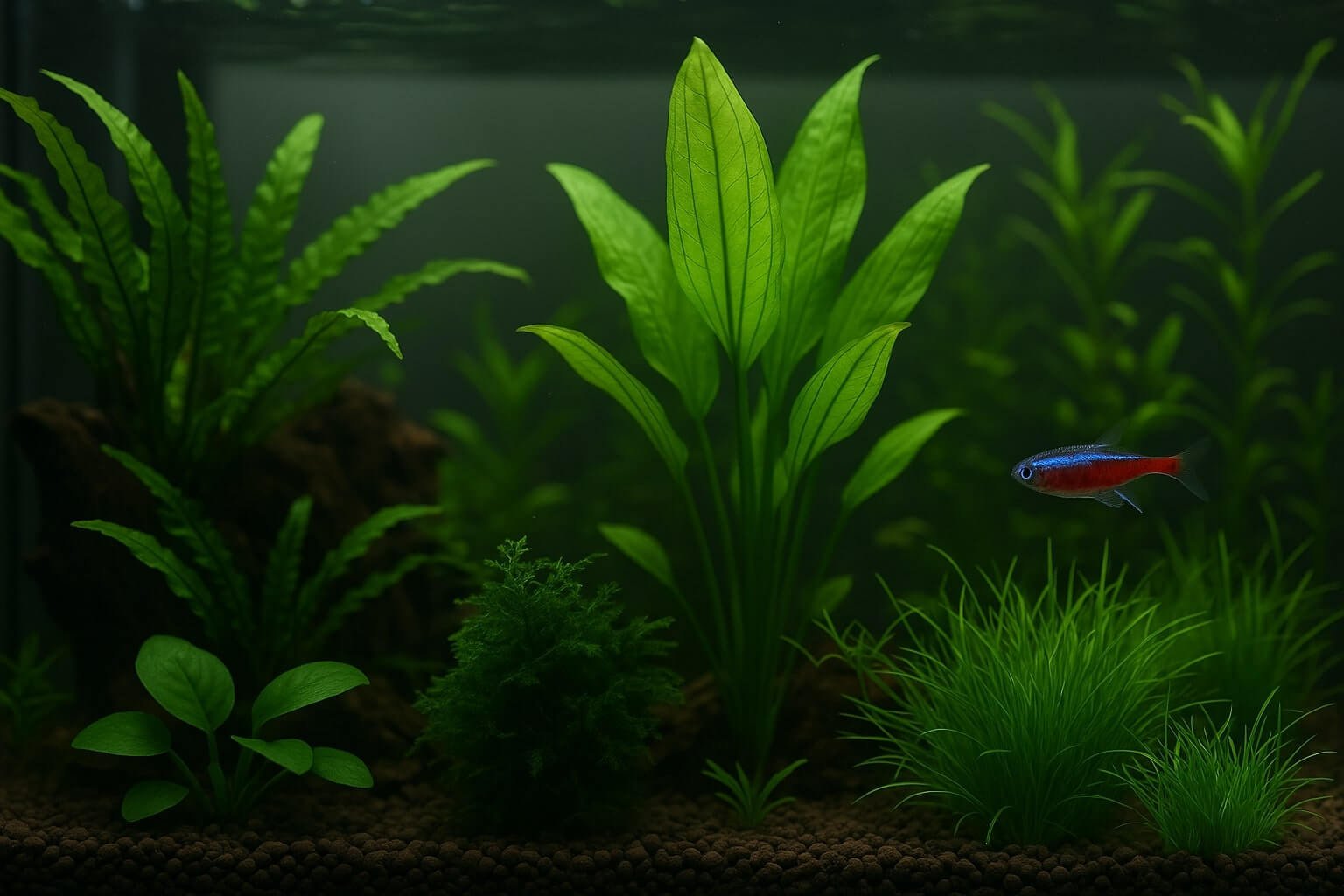A Beginner’s Guide to Thriving Underwater Gardens
Aquarium plants aren’t just decorative — they’re essential for a healthy aquatic ecosystem. Whether you’re a hobbyist or a first-time aquarist, learning how to care for aqua plants can transform your tank into a lush, vibrant underwater paradise. In this guide, we’ll walk you through everything you need to know to keep your aquatic plants thriving — from choosing the right species to mastering lighting, nutrients, and maintenance.
🪴 Why Aqua Plants Matter in Aquariums
Aquatic plants offer more than aesthetic appeal. They:
- Oxygenate the water for fish
- Absorb harmful toxins like ammonia and nitrates
- Provide shelter and breeding grounds
- Help prevent algae overgrowth
- Create a natural, balanced ecosystem
🌱 Choosing the Right Aqua Plants
Start with beginner-friendly plants that are hardy and low-maintenance:
| Plant Name | Light Requirement | Growth Rate | Placement |
|---|---|---|---|
| Java Fern | Low to Medium | Slow | Midground |
| Anubias Nana | Low | Slow | Foreground |
| Amazon Sword | Medium to High | Fast | Background |
| Java Moss | Low | Fast | Floating/Decor |
| Dwarf Hairgrass | High | Medium | Foreground |
Tip: Avoid plastic plants — they don’t offer the same benefits and can damage fish fins.
💡 Setting Up the Ideal Environment
1. Substrate Selection
Use nutrient-rich substrates like:
- Fluval Stratum
- ADA Aquasoil
- Eco-Complete
These support root development and long-term plant health.
2. Lighting Essentials
Plants need 8–10 hours of light daily. Use full-spectrum LED lights with timers to maintain consistency.
| Light Type | Best For |
|---|---|
| LED Full Spectrum | Most freshwater plants |
| Fluorescent | Low-light plants |
3. Water Parameters
Maintain:
- Temperature: 22–28°C (72–82°F)
- pH: 6.5–7.5
- Hardness: 3–8 dGH
Use test kits weekly to monitor water quality.
🧪 Nutrients and Fertilization
Aquatic plants absorb nutrients through roots and leaves. Provide:
- Macronutrients: Nitrogen (N), Phosphorus (P), Potassium (K)
- Micronutrients: Iron (Fe), Magnesium (Mg), Zinc (Zn)
Fertilizer Types:
- Liquid Fertilizers: For water-column feeders like Java Moss
- Root Tabs: For rooted plants like Amazon Sword
- CO₂ Injection: Optional but boosts growth in high-light setups
✂️ Maintenance Tips for Healthy Growth
1. Pruning
Trim dead or overgrown leaves weekly to:
- Encourage new growth
- Prevent decay
- Improve light penetration
2. Algae Control
Combat algae by:
- Avoiding overfeeding fish
- Maintaining proper lighting
- Adding algae-eaters like snails or shrimp
3. Cleaning Plants
To clean plants:
- Dip in 10% bleach solution for 2–3 minutes
- Rinse thoroughly before replanting
🧼 Filter and Circulation
Choose filters that:
- Don’t create strong currents
- Maintain water clarity
- Support biological filtration
Tip: Sponge filters are gentle and plant-friendly.
🧠 Troubleshooting Common Issues
| Problem | Cause | Solution |
|---|---|---|
| Yellowing Leaves | Nutrient deficiency | Add iron-rich fertilizer |
| Melting Plants | Sudden water changes | Acclimate slowly |
| Algae Overgrowth | Excess light/nutrients | Reduce light, add algae eaters |
| Stunted Growth | Low CO₂ or poor substrate | Inject CO₂ or upgrade substrate |
🧩 Aquascaping Tips
Create depth and visual interest by:
- Layering foreground, midground, and background plants
- Using driftwood and rocks for anchoring
- Leaving open swimming space for fish
🧠 FAQs: Aqua Plant Care in Aquariums
❓ How often should I fertilize aquarium plants?
Answer: Once a week for liquid fertilizers; root tabs every 2–3 months.
❓ Can I grow plants without CO₂?
Answer: Yes! Many low-light plants like Java Fern and Anubias thrive without CO₂.
❓ Why are my plants turning brown?
Answer: Likely due to poor lighting or nutrient deficiency. Adjust light duration and add fertilizers.
❓ Do I need a special substrate?
Answer: For rooted plants, yes. Nutrient-rich substrates support healthy growth.
❓ How do I prevent algae?
Answer: Limit light to 8 hours/day, avoid overfeeding, and maintain water quality.





